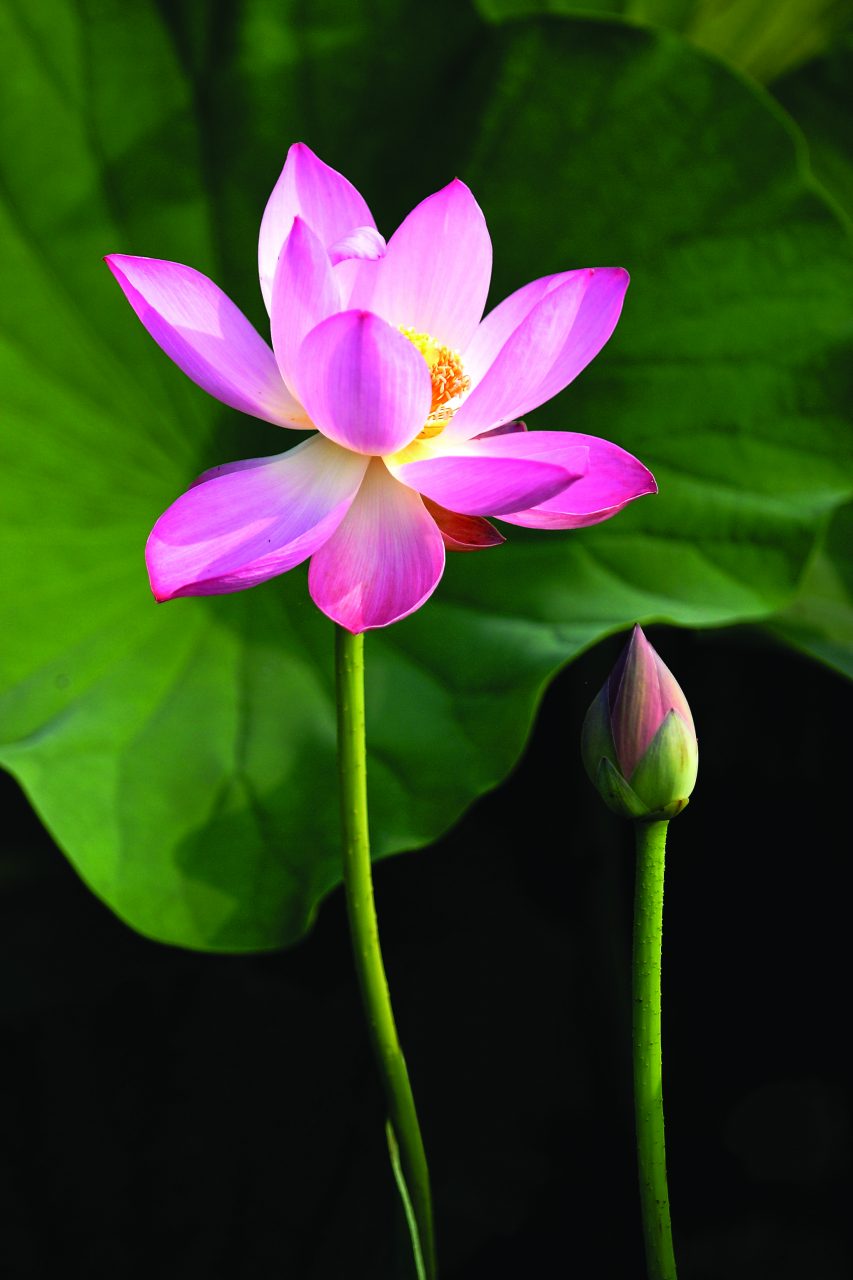Grow with Grace : Just Like The Lotus Yamas + Niyamas | By Hali Love
The magnificent lotus flower, Nelumbo nucifera, is viewed by many as one of mother nature’s finest creations. It’s a divine wild flower that perseveres through murky, muddy waters to alas float gracefully upon the darkness from which it was born.
The lotus is a beautiful representation of life itself. I feel that we, each of us, have the ability to not only go through, but “grow through” our life, specifically our perceptual dark times.
We have the ability to persevere with grace and allow our authentic beauty to shine.
It’s a nice idea, isn’t it? But how can we actually turn this somewhat of a “yogi concept” into a tangible action? Well, we can explore this idea by diving into yoga’s roots, specifically “The Yamas and Niyamas.”
In the Winter + Spring 2018 issue of CO Yoga + Life, we explored the first two Yamas:
-
Ahimsa, which means non-violence, self love and kindness; and
-
Satya, which means truthfulness in thought word and action.
In this issue we will expand on how the final three Yamas can be used to evolve your life. The following three Yamas (self observances) are:
-
Asteya: Non Stealing
-
Bramacharya: Moderation
-
Aparigraha: Non Coveting
In the Buddhist Tradition, the lotus represents purity and detachment from life’s desires. Purity and detachment from life’s desires are really what the last three Yamas embody.
Asteya (non stealing) goes far beyond the physical act of stealing. The most important aspect involves embracing each and every one of the Six Human Emotions: Fear, Anger, Grief, Discontentment, Contentment, and Joy. When I first learned this, I was a bit confused, but check this out:
As humans, we were designed to feel. We were born with the capacity to feel the Six Human Emotions as described above. We were born without the filter of believing that Joy is better than Anger. But if you take away our social conditioning — emotions are emotions. Feelings are valid, and Joy is NOT better than Anger — it is an equal.
Yeah right! Who wants to be angry?
Well, I do! I have been responsibly expressing my anger for years now (note the word “responsible”); and it was not until I started this practice that I really understood that anger is in-fact a healthy emotion — as is joy, grief, discontentment, fear and contentment!
Consider that the most sought after life desire is to be happy. Fair enough right? But what about the other five emotions? If we are always striving and reaching for happiness, are we not robbing ourselves the experience to feel and express the rest of the emotions? I would say most definitely, yes.
For me Asteya (non stealing) means to allow an experience to happen (not to rob an experience of happening). This does not mean to punch out the next a-hole that ticks you off. What it means is to acknowledge your anger and express it in a responsible manner that will not have a negative impact on anyone around you.
Asteya merges with the next Yama: Bramacharya (moderation). There are so many do’s and don’ts in the world today — would you agree? Don’t eat gluten. Don’t drink alcohol. Don’t eat meat, and for the love of God, don’t you dare eat that chocolate cake!!!
Question: If we are truly practicing Ahimsa (kindness), Satya (truthfulness), Asteya (non stealing) and Bramacharya (moderation), would there ever really be a problem with over consumption? Or over expression (like punching out the a-hole)? Or gossiping? Or lying? Or contributing to self harm in any way shape or form? No, there would not.
Bramacharya, or moderation, can be used to check yourself before diving into the fleeting pleasure of life’s desires concerning the food we choose to put in our body, the sexual encounters we choose to partake in, alcohol consumption, sugar intake, etc.
The final Yama: Aparigraha (non coveting), allows one to be content with what we have, and content with what is. Just as the lotus is content with displaying its beautiful petals atop the muddy water it travelled through to reach the light of day.
I feel that contentment in itself is the highest form of gratitude. The practice of it for me is to open to gratitude in any situation.
To grow the practice of Aparigraha, think of gratitude as the seed of true love. Compassion in action is the water that nourishes the seed and allows growth to commence. The desire to connect with another can spark curiously, and present the question: Is this true love? When true love in fact blossoms for another, freedom is born. When the gentle breeze of self love caresses your existence, you are delivering your greatest gift to the world … all the while truly living Ahimsa, Satya, Astya, Bramacharya and Aparigraha. Conclusion to The Yamas. Stay tuned for my next article as we dive into the following five principles: The Niyamas.
Originally published in the Summer + Fall 2018 issue.
 Wishing for a world of true community and connection, endless organic almond milk lattes and perfectly ripe avocados, Hali Love is a yoga teacher, coach and author. Her purpose and passion is to inspire lasting healing to people who are truly ready for change, through natural health ideologies, yoga, meditation, fitness classes and life coaching. Having recently entered her fabulous forties, this Canadian turned Costa Rican yogi is busy not only being a proud mama to her beautiful 9 year old daughter Bili Be, but is also managing her booming retreat center and studio in Costa Rica: Playa Negra Yoga & Barre. From sipping chardonnayat sunset, to burpees on the beach, to facilitating YTTs and managing her online programs, you will find this gal living, and loving her most authentic life. View more at halilove.com / playanegrayoga.com / multistyleyoga.com.
Wishing for a world of true community and connection, endless organic almond milk lattes and perfectly ripe avocados, Hali Love is a yoga teacher, coach and author. Her purpose and passion is to inspire lasting healing to people who are truly ready for change, through natural health ideologies, yoga, meditation, fitness classes and life coaching. Having recently entered her fabulous forties, this Canadian turned Costa Rican yogi is busy not only being a proud mama to her beautiful 9 year old daughter Bili Be, but is also managing her booming retreat center and studio in Costa Rica: Playa Negra Yoga & Barre. From sipping chardonnayat sunset, to burpees on the beach, to facilitating YTTs and managing her online programs, you will find this gal living, and loving her most authentic life. View more at halilove.com / playanegrayoga.com / multistyleyoga.com. A warming blend of peppermint, eucalyptus, juniper berry, lemon peel, ginger root and “whole-plant” CBD is exactly what [...]

Subscribe to Our Tribe
Stay up to date with Y+L News, Events and special announcements.










